Mesopotamia
| Site: | Plateforme pédagogique de l'Université Sétif2 |
| Cours: | Initiation to Civilization and Cultural Texts |
| Livre: | Mesopotamia |
| Imprimé par: | Visiteur anonyme |
| Date: | lundi 3 novembre 2025, 04:35 |
Description
 In this book, you will find summarized information about Mesopotamia and the civilizations that lived there.
In this book, you will find summarized information about Mesopotamia and the civilizations that lived there.
1. The Geographical Setting of Mesopotamia
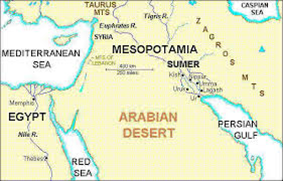

2. Ancient Civilizations in Mesopotamia

3. Sumerian

3.1. Religion
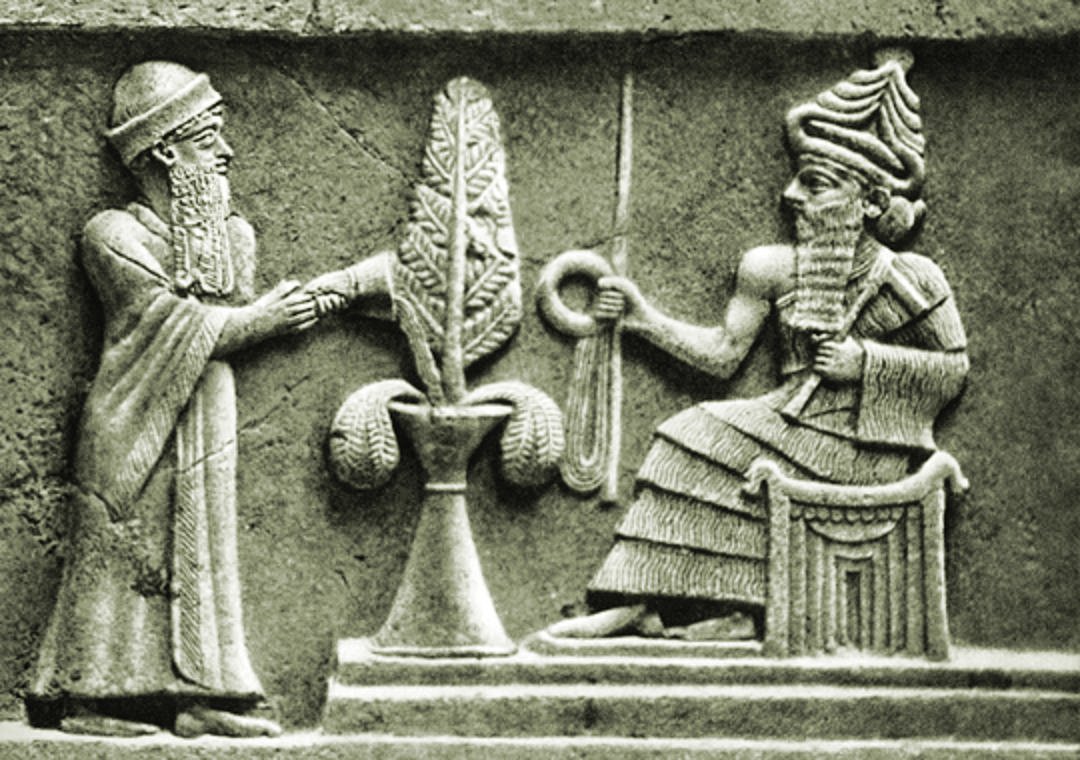
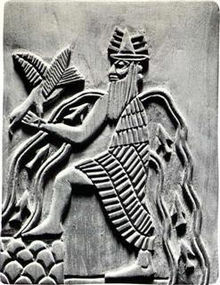
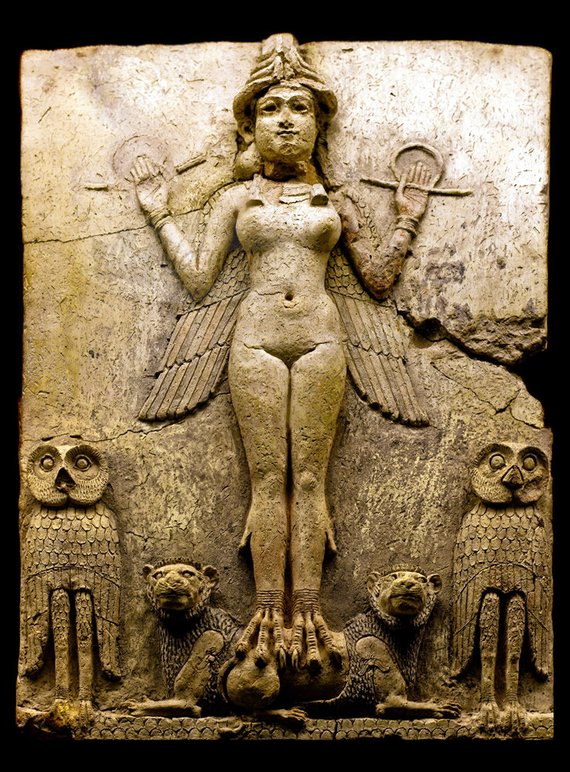
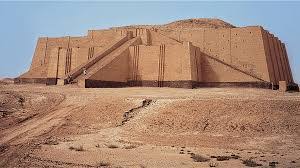

3.2. Culture and writing

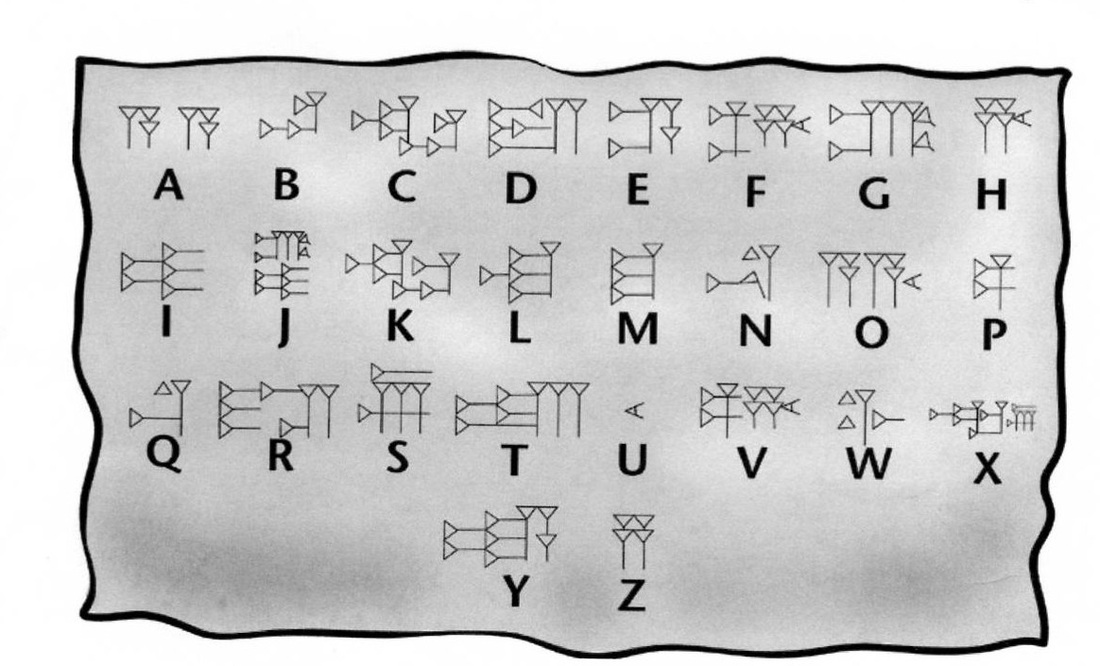
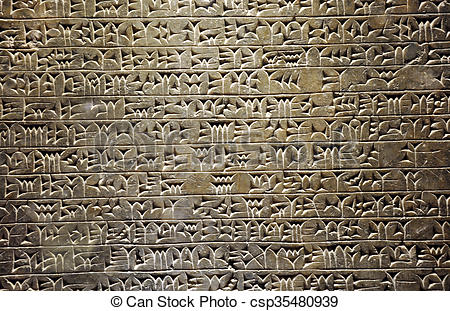
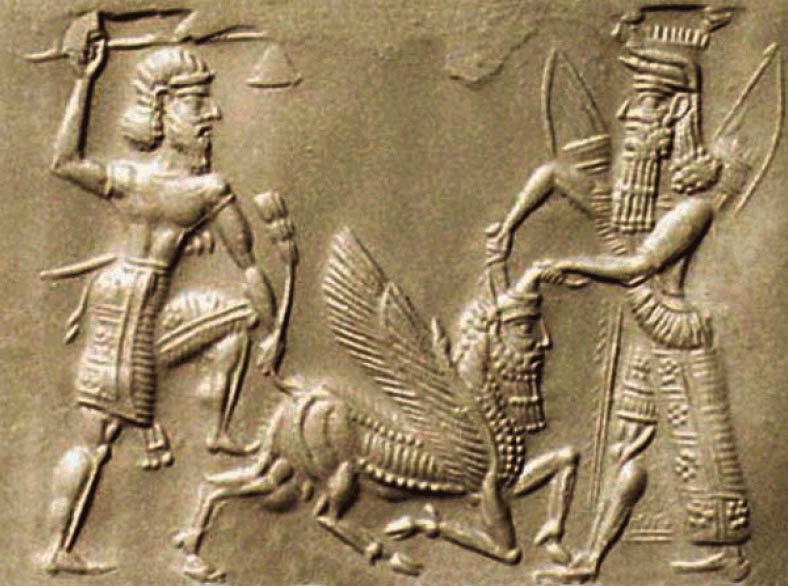
4. the Akkadian Empire
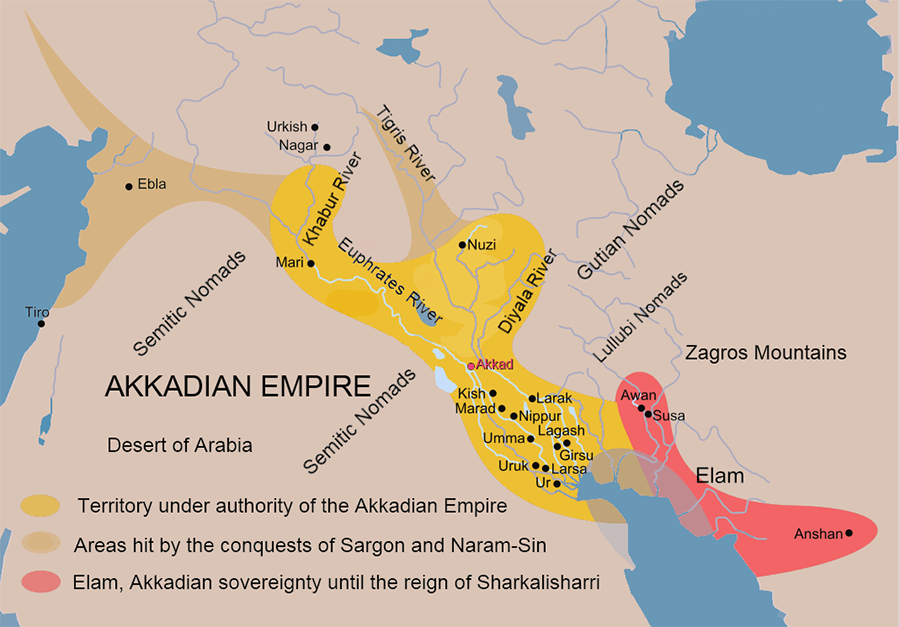
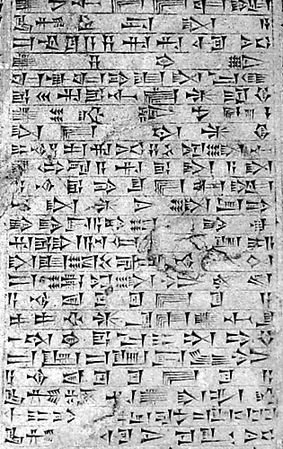

4.1. Political Environment
Sargon of Akkad (also known as Sargon the Great, Shar-Gani-Sharri, and Sarru-Kan, meaning "True King" or "Legitimate King") reigned in Mesopotamia from 2334 to 2279 BCE. He is equally famous today as the father of the great poet-priestess Enheduanna. He was born an illegitimate son of a "changeling", which could refer to a temple priestess of the goddess Innana (whose clergy were androgynous) and, according to the Sargon Legend (a cuneiform clay tablet purporting to be his biography) never knew his father. His mother could not reveal her pregnancy or keep the child, and so he was set adrift by her in a basket on the Euphrates River where he was later found by a man named Akki who was a gardener for Ur-Zababa, the King of the Sumerian city of Kish. From this very humble beginning, Sargon would rise to conquer all Mesopotamia and create the first multi-national empire in history.
"My mother was a changeling, my father I knew not,
The brother of my father loved the hills,
My home was in the highlands, where the herbs grow.
My mother conceived me in secret, she gave birth to me in concealment.
She set me in a basket of rushes,
She sealed the lid with tar.
She cast me into the river, but it did not rise over me,
The water carried me to Akki, the drawer of water.
He lifted me out as he dipped his jar into the river,
He took me as his son, he raised me,
He made me his gardener" (Bauer, 95).
The Akkadian Empire was the first political entity to make extensive and efficient use of bureaucracy and administration on a large scale and set the standard for future rulers and kingdoms. His story was long known throughout Mesopotamia where, in time, he came to be considered the greatest man who had ever lived, celebrated in glorious tales down through the Persian Empire, along with his grand-son Naram-Sin.
The historian Paul Kriwaczek sums up the impact Sargon had on later generations in Mesopotamia, writing, "for at least 1,500 years after his death, Sargon the Great, founder of the Akkadian Empire, was regarded as a semi-sacred figure, the patron saint of all subsequent empires in the Mesopotamian realm". Even so, where he came from and even his actual name are unknown.
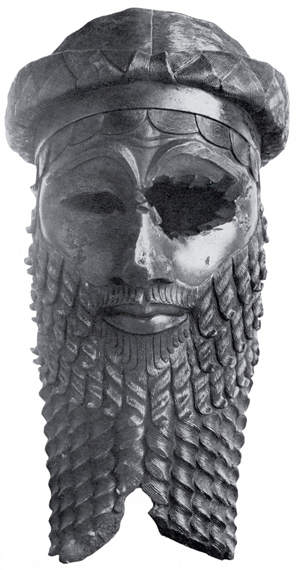

4.2. Economy, Religion and Social life
Sargon built the greatest empire of his time and with overthrowing Lugalzagesi and seizing power he gained an already united kingdom. This was an advantage for his military campaigns to control Mesopotamia. His legend established his humble backgrounds which made him a hero in the eyes of laymen. As in later ages and other cultures, up to the present day, class distinctions in the Sumerian cities had led to a growing resentment by the lower class for the upper elite. The wealthiest citizens were able to take as much land as they could hold and the lower classes routinely felt disenfranchised. Sargon's tale of his humble beginnings as a gardener would have appealed to the large numbers of working-class Sumerians who may have seen him as a liberator and reformer. Directly after his rise to power, however, the city-states and their ruling elite hardly accepted Sargon with grace and submission; they rebelled against their new ruler and forced him to prove his legitimacy as king through military might.
Because of the large geographic scope that the Akkadian Empire deployed on, they enjoyed prosperity and wealth. in addition, Sargon was in control of the silk road and manipulated the maritime trade in the area. He had built a large fleet both military and commercial
5. Babylonian Civilization



5.1. Politics and Law under Hammurabi's rule
The known history of Babylon, then, begins with its most famous king: Hammurabi (1792-1750 BCE). According to historians, He was an Amorite prince who sat on the throne upon the abdication of his father, King Sin-Muballit, and quickly transformed the city into one of the most powerful and influential in all of Mesopotamia. Hammurabi’s law codes are well known but are only one example of the policies he established to maintain peace and encourage prosperity. He enlarged and heightened the walls of the city, engaged in great public works which included magnificent temples and canals, and made diplomacy the milestone of his administration. So successful was he in both diplomacy and war that, by 1755 BCE, he had united all of Mesopotamia under the rule of Babylon which, at this time, was the largest city in the world, and named his realm Babylonia.
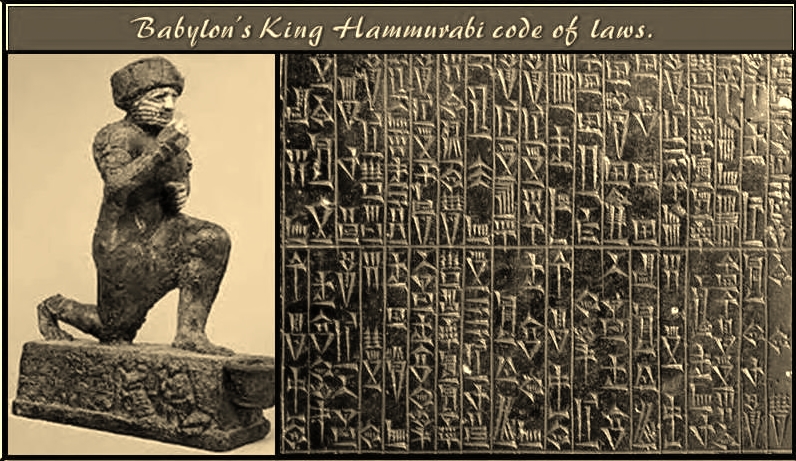
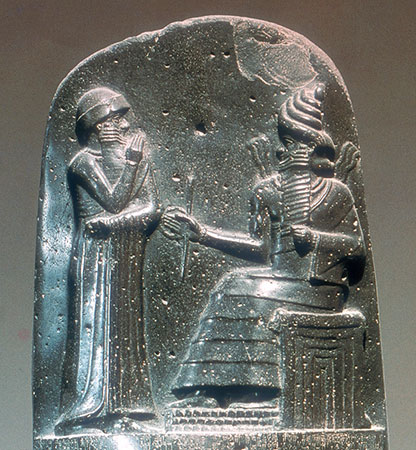
5.2. Intellectual achievement
Babylonians were the first to develop a measuring system and a sophisticated mathematics. They succeeded in designing a world map using astrology and sea travel.
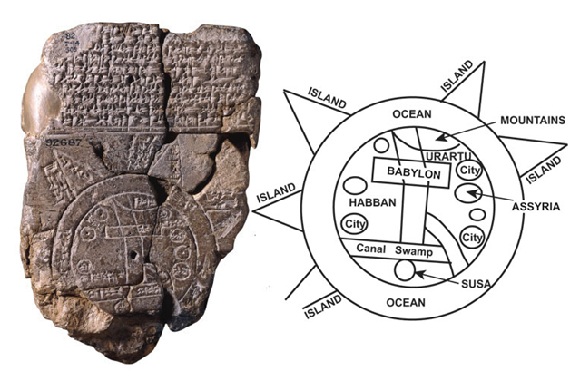



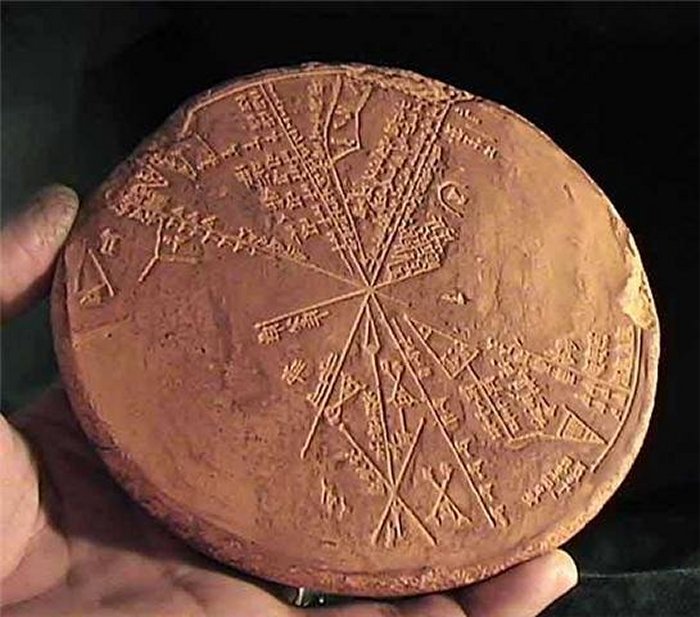
5.3. Culture and Religion
In addition to the Hammurabi's code of law, Babylonians used to write poems about the gods, especially Ishtar or Innana and Murdock (The supreme god).

Even the most amazing architectural monuments were the temples that were built for the gods, like the Great Tower of Babylon (that we have seen earlier) and Ishtar's Gate that was taken into Pergame Museum in Berlin.

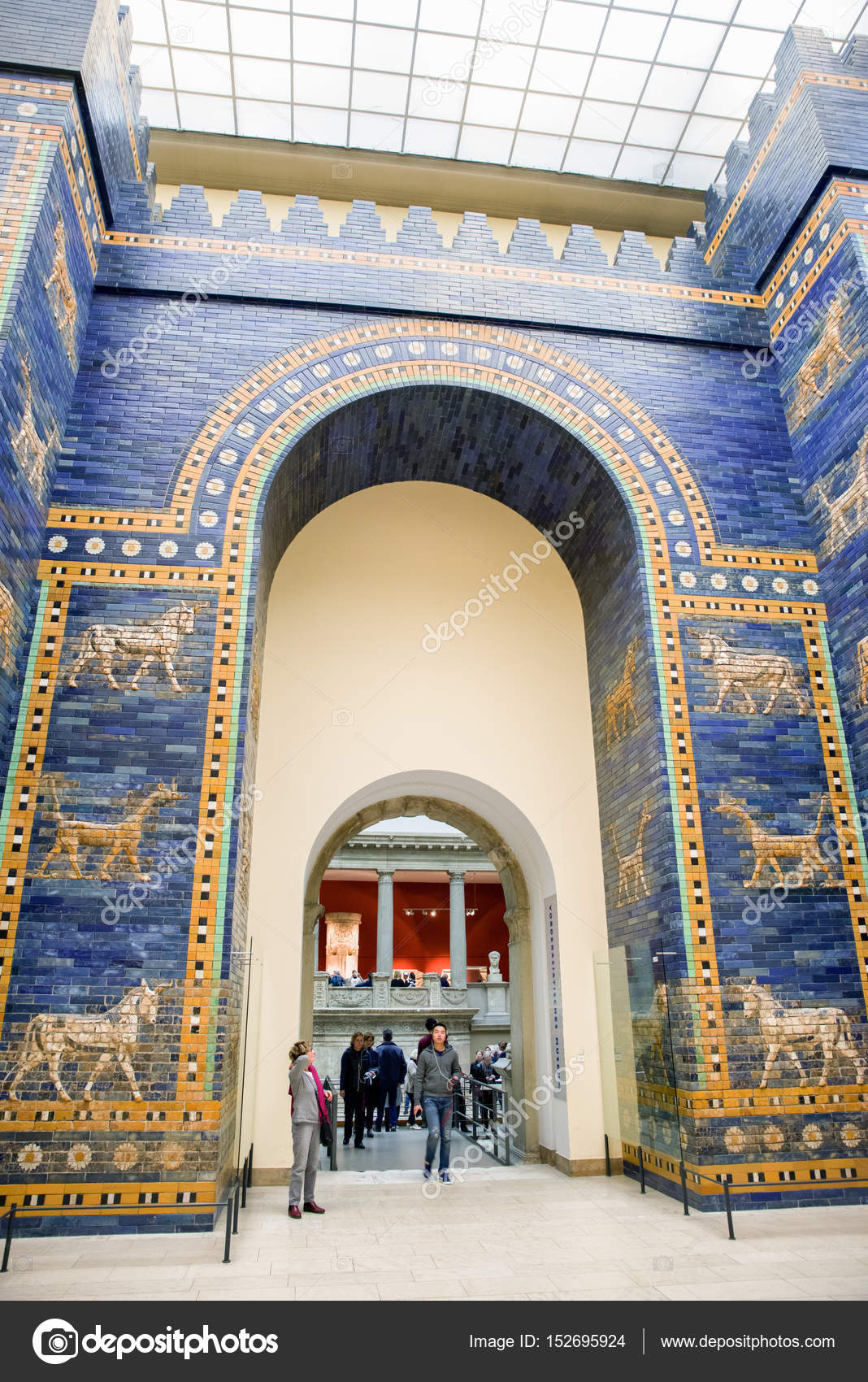
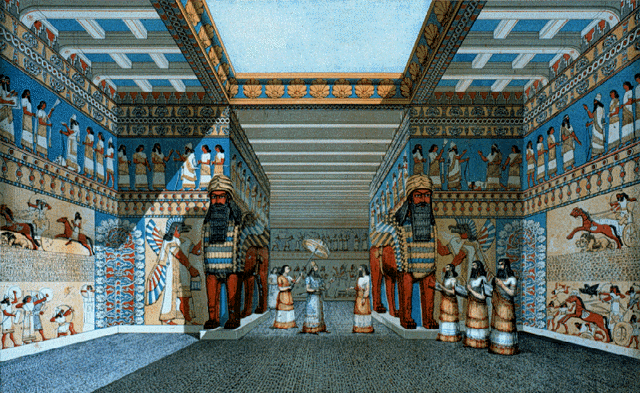
Babylonian System of writing is Cuneiform as all the Mesopotamian Empires. They also used their genius in mathematics, geometry and the knowledge of their weather to develop a sophisticated agriculture and irrigation system
like the one used in building the astonishing Hanging Gardens Of Babylon. The Gardens are described by travelers as a green stairs mountain.

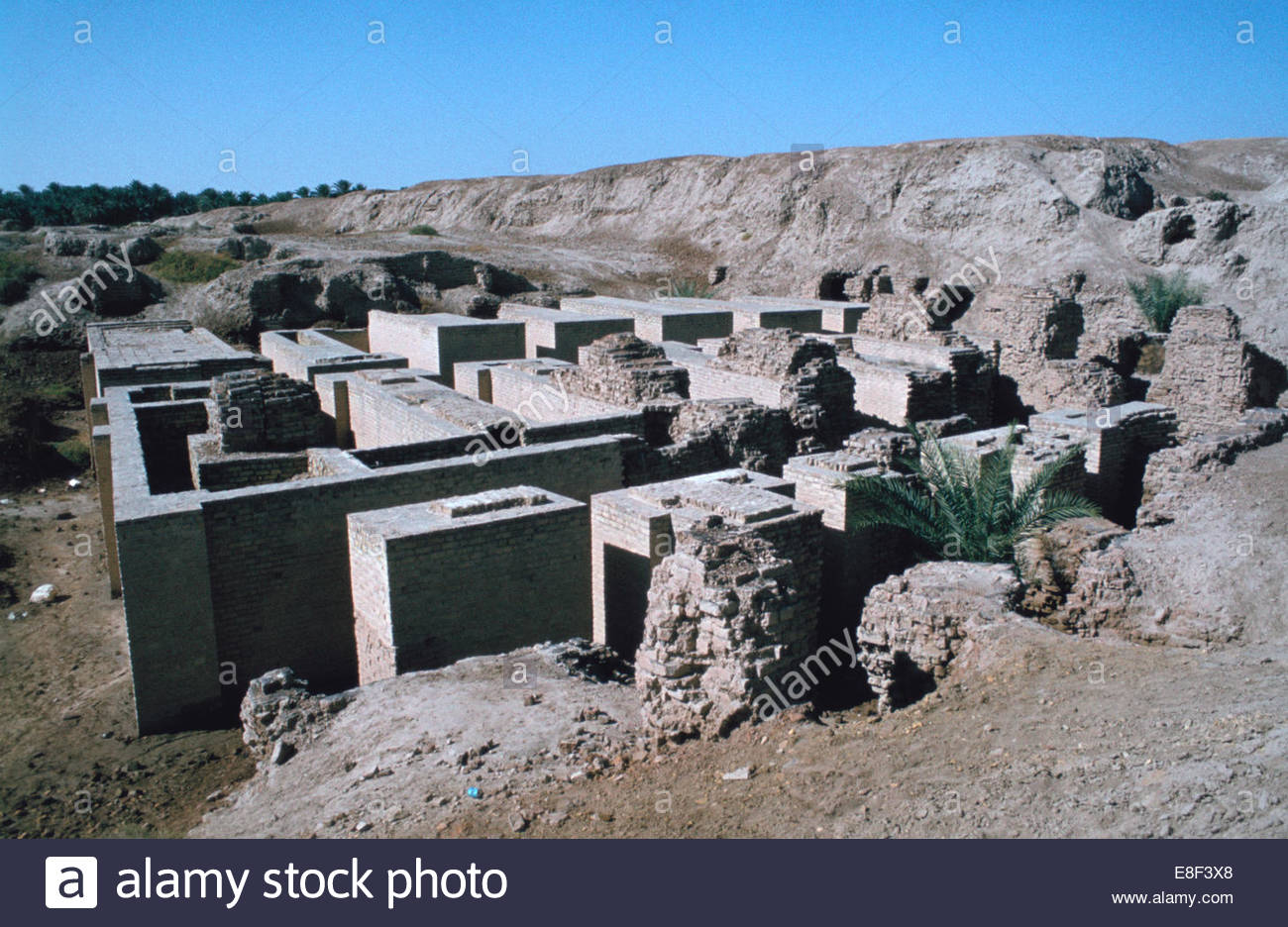
The Babylonian Empire established by Hammurabi lasted for 260 years until Babylon got sacked by invaders in 1531 BCE. In the period between 626 BCE and 539 BCE, Babylon asserted itself again over the region with the Neo-Babylonian Empire. This new empire was overthrown by the Assyrians.
6. The Assyrian Empire
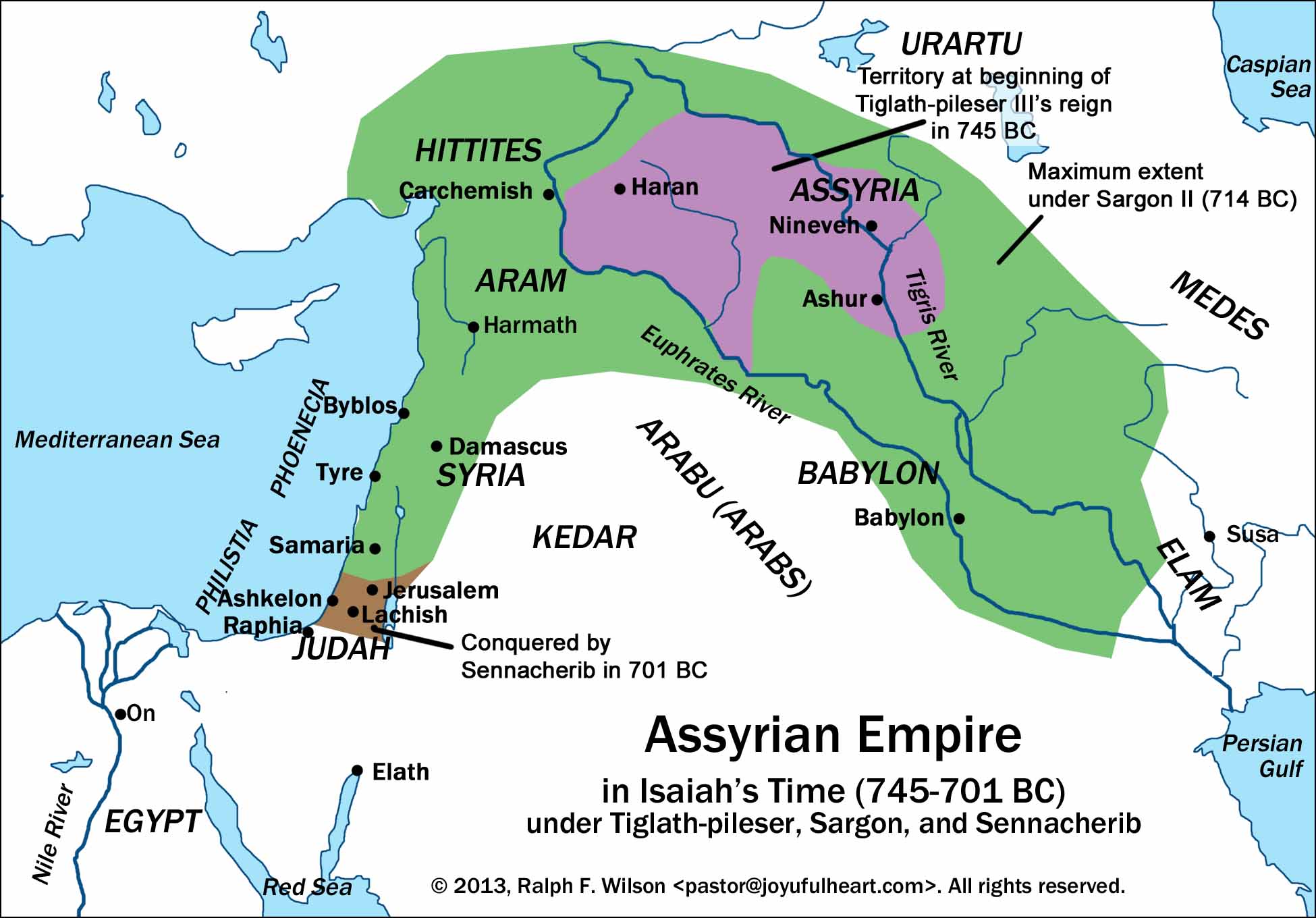
6.1. Old Kingdom
Although the city of Ashur existed from the 3rd millennium BCE, the extant ruins of that city date to 1900 BCE which is now considered the date the city was founded. According to early inscriptions, the first king was Tudiya, and those who followed him were known as “kings who lived in tents” suggesting a pastoral, rather than urban, community.
Ashur was certainly an important center of commerce even at this time, however, even though its precise form and structure is unclear. The king Erishum I built the temple of Ashur on the site in c. 1900/1905 BCE and this has come to be the accepted date for the founding of an actual city on the site although, obviously, some form of city must have existed there prior to that date.
The trade colony of Karum Kanesh (the Port of Kanesh) was among the most lucrative centers for trade in the ancient Near East and definitely the most important for the city of Ashur. Merchants from Ashur traveled to Kanesh, set up businesses, and then, after placing trusted employees (usually family members) in charge, returned to Ashur and supervised their business dealings from there.
The Rise of Ashur
The wealth generated from trade in Karum Kanesh provided the people of Ashur with the stability and security necessary for the expansion of the city and so laid the foundation for the rise of the empire. Trade with Anatolia was equally important in providing the Assyrians with raw materials from which they were able to perfect the craft of iron working. The iron weapons of the Assyrian military would prove a decisive advantage in the campaigns which would conquer the entire region of the Near East. Before that could happen, however, the political landscape needed to change.
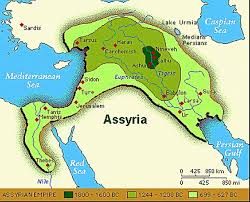
soon after Hammurabi’s death in 1750 BCE, the Babylonian Empire fell apart. Assyria again attempted to assert control over the region surrounding Ashur but it seems as though the kings of this period were not up to the task. Civil war broke out in the region, and stability was not regained until the reign of the Assyrian king Adasi (c. 1726-1691 BCE). Adasi was able to secure the region and his successors continued his policies but were unable or unwilling to engage in the expansion of the kingdom.
6.2. The Middle Empire
The Hittites struck back and were able to hold the Assyrians at bay until the king Ashur-Uballit I (c.1353-1318 BCE) defeated the remaining Mitanni forces under the Hittite commanders and took significant portions of the region. He was succeeded by two kings who maintained what had been won, but no further expansion was achieved until the coming of King Adad Nirari I (c. 1307-1275 BCE) who expanded the Assyrian Empire to the north and south, driving out the Hittites and conquering their major strongholds.
Adad Nirari I is the first Assyrian king about whom anything is known with certainty because he left inscriptions of his achievements which have survived mostly intact. Further, letters between the Assyrian king and the Hittite rulers have also survived and make it clear that, initially, the Assyrian rulers were not taken seriously by those of other nations in the region until they proved themselves too powerful to resist. The historian Will Durant comments on the rise of the Assyrian Empire:
"If we should admit the imperial principle – that it is good, for the sake of spreading law, security, commerce and peace, that many states should be brought, by persuasion or force, under the authority of one government – then we should have to concede to Assyria the distinction of having established in western Asia a larger measure and area of order and prosperity than that region of the earth had ever, to our knowledge, enjoyed before". (270)
Deportees were carefully chosen for their abilities and sent to regions which could make the most of their talents. Not everyone in the conquered populace was chosen for deportation and families were never separated. Those segments of the population that had actively resisted the Assyrians were killed or sold into slavery, but the general populaces became absorbed into the growing empire and were thought of as Assyrians.
6.3. Tiglath Pileser and the Neo-Assyrian Empire
After the death of Tukulti-Ninurta I, the Assyrian Empire was neither expanding nor falling apart. While the whole of the Near East fell into a 'dark age' following the so-called Bronze Age Collapse of c. 1200 BCE, Ashur remained relatively intact. Unlike other civilizations in the region which suffered a complete collapse, the Assyrians seem to stop its movement forward. The empire certainly cannot be said to have 'stagnated', because the culture, including the emphasis on military campaign and the value of conquest, continued; however, there was no significant expansion of the empire and civilization as it was under Tukulti-Ninurta I.
This all changed with the rise of Tiglath Pileser I to the throne (reigned c. 1115-1076 BCE). According to Leick:
"He was one of the most important Assyrian kings of this period, largely because of his wide-ranging military campaigns, his enthusiasm for building projects, and his interest in cuneiform tablet collections. He campaigned widely in Anatolia, where he subjugated numerous peoples, and ventured as far as the Mediterranean Sea. In the capital city, Assur, he built a new palace and established a library, which held numerous tablets on all kinds of scholarly subjects. He also issued a legal decree, the so-called Middle Assyrian Laws, and wrote the first royal annals. He was also one of the first Assyrian kings to commission parks and gardens stocked with foreign and native trees and plants." (171)
Tiglath Pileser I revived the economy and the military through his campaigns, adding more resources and skilled populations to the Assyrian Empire. Literacy and the arts flourished, and the preservation initiative the king took regarding cuneiform tablets would serve as the model for the later ruler, Ashurbanipal’s, famous library at Nineveh. Upon Tiglath Pileser I’s death, his son, Asharid-apal-ekur, took the throne and reigned for two years during which time he continued his father’s policies. He was succeeded by his brother Ashur-bel-Kala who initially reigned successfully until the civil war.
Although the rebellion was crushed and the participants executed, the turmoil allowed certain regions that had been tightly held by Assyria to break free and among these was the area known as Eber Nari (modern day Syria, Lebanon, and Israel), which had been particularly important to the empire because of the well-established sea ports along the coast. The Aramaeans now held Eber Nari and began steping towards the rest of the empire. At this same time, the Amorites of Babylon and the city of Mari asserted themselves and tried to break the hold of the empire.
6.4. Neo-Assyrian Empire
This period is known as the largest expansion of the empire. It is also the era which gave the Assyrian Empire the reputation it has for violence and cruelty. The historian Kriwaczek writes:
"Assyria must surely have among the worst press notices of any state in history. Babylon may be a byname for corruption, decadence and sin but the Assyrians and their famous rulers, with terrifying names like Shalmaneser, Tiglath-Pileser, Sennacherib, Esarhaddon and Ashurbanipal, rate in the popular imagination just below Adolf Hitler and Genghis Khan for cruelty, violence, and sheer murderous savagery. (208)"
Advancements in military technology were not the only, or even the primary, contribution of the Assyrians as, during this same time, they made significant progress in medicine, building on the foundation of the Sumerians and drawing on the knowledge and talents of those who had been conquered and assimilated. Ashurnasirpal II made the first systematic lists of plants and animals in the empire and brought scribes with him on campaign to record new finds. Schools were established throughout the empire but were only for the sons of the wealthy and nobility.
Women were not allowed to attend school or hold positions of authority even though, earlier in Mesopotamia, women had enjoyed almost equal rights. The decline in women’s rights correlates to the rise of Assyrian monotheism. As the Assyrian armies campaigned throughout the land, their god Ashur went with them but, as Ashur was previously linked with the temple of that city and had only been worshipped there, a new way of imagining the god became necessary in order to continue that worship in other locales. Kriwaczek writes:
One might pray to Ashur not only in his own temple in his own city, but anywhere. As the Assyrian empire expanded its borders, Ashur was encountered in even the most distant places. From faith in an omnipresent god to belief in a single god is not a long step. Since He was everywhere, people came to understand that, in some sense, local divinities were just different manifestations of the same Ashur. (231)
This unity of vision of a supreme deity helped to further unify the regions of the empire. The different gods of the conquered peoples, and their various religious practices, became absorbed into the worship of Ashur, who was recognized as the one true god who had been called different names by different people in the past but who now was clearly known and could be properly worshipped as the universal deity.
